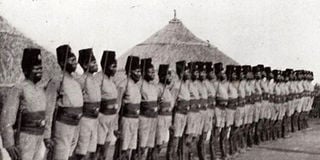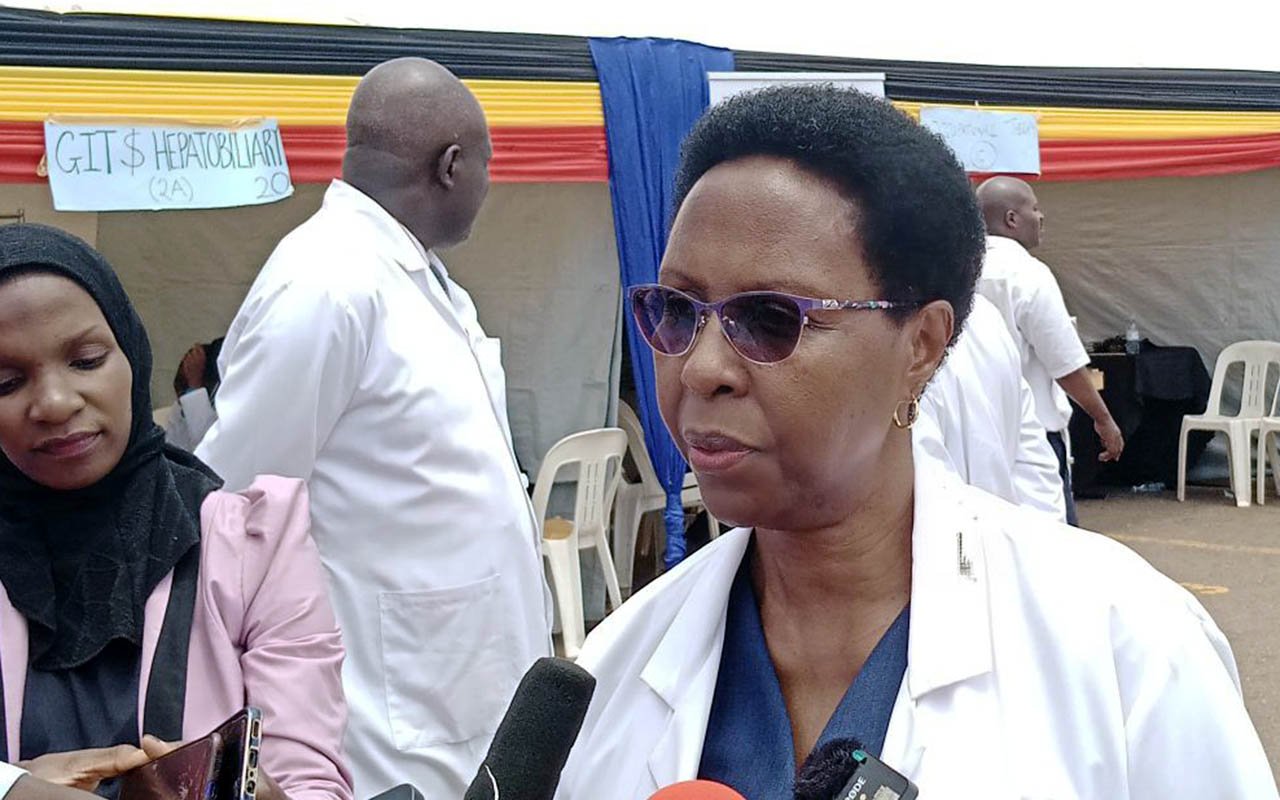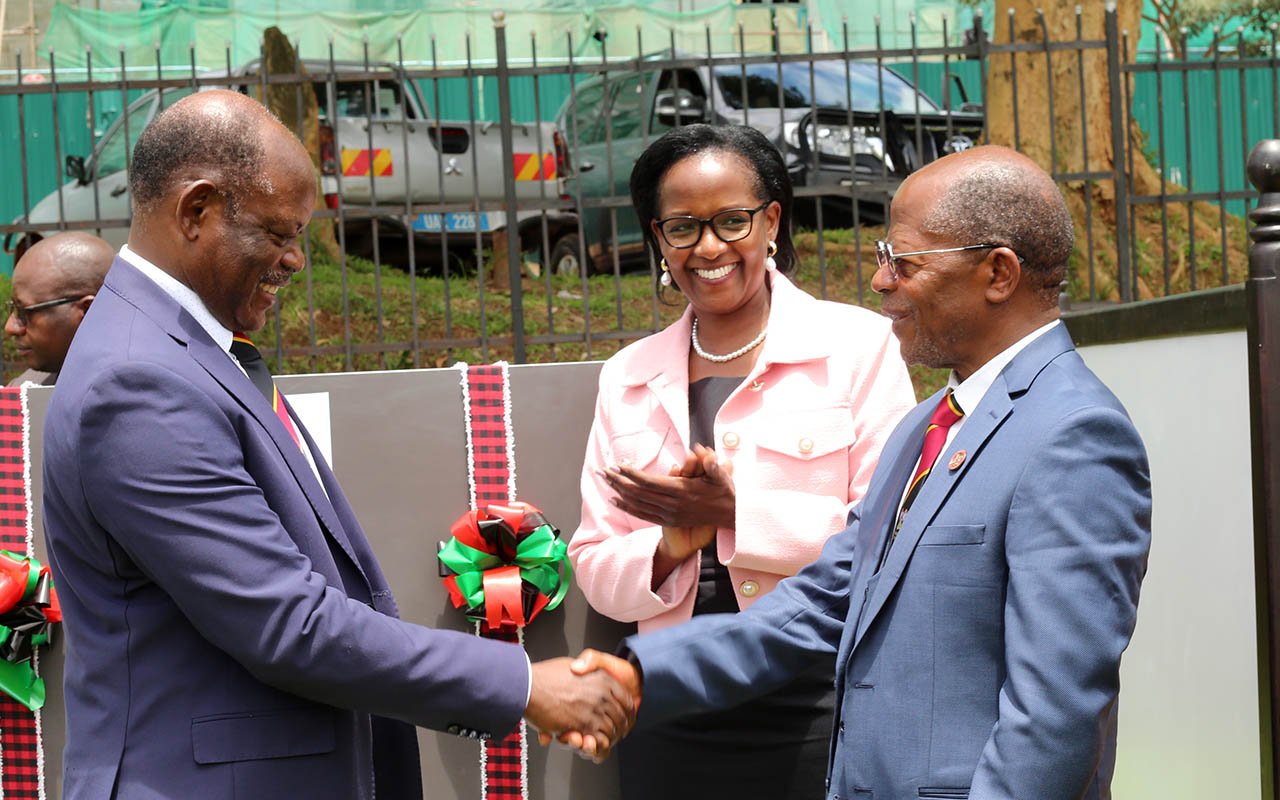Prime
Why Nubians have no cradle in Uganda

Fighters. Members of the Fourth King’s African Rifles (KAR). It had 1,065 soldiers, 600 of them Nubians. Others were Indians, Swahili and some Baganda. FILE PHOTO
What you need to know:
- Coming of Europeans, Nubians. When Frederick Lugard learnt of the presence of a redundant trained army across Lake Albert at Kavillas, an agreement was reached to have these men taken across Lake Albert, and that was how Nubians came to Uganda.
Pose the question “which part of the country are Nubians from” to anyone and you will get varying answers. The truth is they are probably the only Ugandan tribe without a known ancestral area as they are spread across the country.
At the time a country called Uganda came into being, the Nubians were already residents. But despite that, they were considered a minority group and aliens until recently.
Genesis
The people known locally as Banubi came to Uganda in the 1880s at the time Europeans were jostling for territorial control in Africa.
The Banubi were originally from Anglo-Egyptian Sudan and were made up of various tribes including the Bari, Kakwa, Madi, Kuku, Alur, Lendu, Dinka, Shilluk, Makaraka, Lugbara, Nuer, Pajulu, Mundari among others. They were all Sudanic tribes in what was also known as the Lando enclave.
In 1820, Muhammed Ali Pasha of Egypt invaded and annexed part of Sudan. He went as far south as Gondokoro, 750km south of Khartoum. In 1869, Khedive Ismail made Samuel Baker the governor general of Equatorial Basin until 1874 when he was succeeded by Gen Charles Gordon.
During Gordon’s governorship, the Mahadist revolt broke out and he was killed in battle at Amadi in 1885. He was replaced by Emin Pasha. With the revolt raging, they were cut off from Khartoum and settled at a place called Kavillas on the other side of Lake Albert.
When Stanley was sent to find Emin Pasha, he found him at Kavillas where his army was divided. One group led by Salim Bey was loyal to Emin Pasha and wanted to follow him to the East African coast and get back to Khedive’s Egypt but they were left behind. Another group led by Fadha Mula Bey wanted to join the Mahadist rebellion.
When European powers were establishing spheres of influence in Africa, Frederick Lugard came to Uganda. As an agent of a British trading company, he learnt of the presence of a redundant army already trained across Lake Albert at Kavillas.
His first contact was with a group led by Salim Bey. An agreement was reached to have his men taken across Lake Albert by Lugard into what came to be Uganda. The core group that came with Lugard comprised of 900 soldiers with 9,100 of their relatives.
Called into action
Mr Ismael Kerim, the general secretary of the Nubian Consultative Forum and coordinator of the Nubian tourism centre, says Tooro Kingdom was the first place where his ancestors were called into action.
“Their first action was to restore the Omukama Kasagama of Tooro who had been overthrown by Kabalega. Some men were left there before proceeding to Buganda.”
These were the people that formed the backbone of the army when the colonial government started organising a defence force which came to be known as the Uganda rifles.
Born and raised in Bombo in 1950, Kerim’s ancestral land in Wabikokoma village in Luweero District where his father was born.
“When our forefathers came here they were brought as enlisted officers and men. They were confined to camps and their families close to these cantonments gave raise to towns around those areas,” he says.
Spreading out
Shortly after Lugard brought the Nubian soldiers to Uganda, the religious wars broke out.
“The Baganda Muslims who had fled to Bunyoro with Kabaka Kalema tried to regain the throne. They found a strong Nubian force in Buganda,” writes Sir John Milner Gray in the Church Missionary Society records.
“The Kabalega-backed force was driven back up to the Kafu junction, were they proclaimed Umon Kafu (they are afraid). The people will never come back. That’s how the name Kafu came about,” Kerim says.
In 1905, the protectorate government established the Fourth King’s African Rifles (KAR) in Uganda. It had 1,065 soldiers, 600 of them Nubians. Others were Indians, Swahili and some Baganda. The native African officers included MajAli, a Nubian, Capt Arthur Makanga, a Muganda from Bowa, and Capt Owori from Majanji.
At the time of its creation, KAR’s base was at Shimoni in Kampala.
“The Mengo establishment was not comfortable having a non-Baganda army loyal to the colonial government close to the palace. That’s when they were shifted to Bombo and others went to Kitubulu in Entebbe,” says Kerim.
With the soldiers shifted to Bombo, they moved with their families which were kept outside the barracks, leading to the growth of Bombo centre by the relatives of the serving soldiers. While still at Shimon their family members were scattered around Naguru, Kisugu, Namuwongo, Kitintale, Katwe, Mengo and Luzira.
The Nubian soldiers stayed in service until World War I broke out.
“These engagements further spread the Nubian community not only in Uganda but in Tanzania and Kenya, some never returned after their tour of duty and they decided to start a new life in the areas where they had been deployed to serve,” says Kerim.
After a while, the protectorate government saw the need to give the Nubian soldiers permanent settlement. The initial plan was to give them land in northern Uganda.
“The provincial governor northern Uganda refused, saying that will be an act of theft giving Acholi land to Nubians. It was not until 1938 when a formal announcement on the future settlement of the Nubians in Uganda was made. They were to be settled in areas called Mulkis these were mainly in Masindi, Arua, Kitgum but they did not have authority over the land.”
However, it was not mandatory for people to settle in those Mulkis. Many of those who had stayed in Buganda opted to say on condition, “stay in Buganda and become subjects of the Kabaka and pay hut tax,” says Kerim.
The Bombo community remained and when the British were establishing administration centres, it’s where they turned to recruit manpower to guard their posts.
“Some people were picked to go and work at the railway stations between Tororo and Soroti. These attracted their relatives who opened small trading posts.”
Nubians and Amin
When Nubians were transferred to Bombo, they used the availability of land there to establish an Islamic education centre with a big mosque in 1923. It was this centre that united former president Idi Amin and the Nubians as a young boy.
“Amin was never a Nubian. His mother had relatives in Bombo. She brought him to get Islamic education. He was staying at the home of Ahmed Yusuf Tambu, a Nubian Kakwa in Lomule village.”
From Bombo, Amin went on to join the army. Kerim says Amin would go on to grow in rank in the military and later become president, but he didn’t forget his childhood friends. This connection later came to haunt Nubians after the fall of Amin in 1979.
“People are alleging that we were in charge of everything during Amin’s time. But the world does not know that Nubians died during this time. For instance, Rashid Nasur and Fazal Rajab were Israel-trained officers murdered at Entebbe and their bodies dumped in Lake Victoria. Adam Abduluhamid, an engineer, was also killed and Asha Karim, a stenographer at the Ugandan embassy in Egypt, was dropped in a manhole, among others.”
Kerim says many Nubians, like other Ugandans, suffered and lost their property. In Buganda and western region they were fortunate that no property was lost, but in Soroti, Lira and Gulu everything was lost.
Locations of Nubian in uganda
In Bombo alone, central region, they occupied up to 24 villages. These include Asuru, Bembe, Biyago, Bikokoma, Darga, Gogonya, Kongo, Kudufi, Kayanja, Kiyana, Kabulanaka, Katanga, Kambi, Lendu, Loyi, Kasingiri, Lomule, Lumba, Jeriba, Bagara, Masjid Nur, Mpakawero, Maili inyirin, Makina road, Nakatunya, Namba six, Nanywa, Sedertula, Wayindi Ishirini, Gangama, Naguru, Kisugu, Namuwongo, Kitintale, Katwe, Mengo, Luzira, Kawempe, among others.
Eastern region had Wanyange, Wairaka, Bugembe, Kakira, Bugiri, Namatala, Bufumbo, Nkoma, Namakwekwe, Naboyo, Doko, Nagongera, Kasilo, Mukuju, Juba, Maguria, Maili Mbili, Kumi Town, Bukedea, Nakatunya Kambi Swahili, Arapai, Kengere, and Pangisa.
In northern region, the areas occupied by Nubians include; Arua Town, Tanganyika village, Kenya Village, Baruku village, Mastura, Awindiri, Kambi Muru, Mutukula corner, Swahili Cell all in Arua.
In Gulu they include, Layibi, Kasubi, Eriaga, Keyi, Labour line, and Pece. In Adjumani they are in Adjumani Town, Abirichaku, Pakele and Djaipi.
In Karamoja they reside in Moroto and Kambi Swahili, in Kitgum they are found in the town, Puranga, Odek, and Kambi Dinka.
In Lira they are in Kambi Nubi, Ngetta, Ogur, Apac, Kasubi and Kirombe, in Moyo they are found Moyo Town, Obongi and Itula.
In western region, they are in in Hoima, Kinubi, Kinkiizi in Rukungiri, Kasese Town, Kirasa in Masindi, Kakoba, Ruharo, and Kubiri in Mbarara and in Kitumba, Kijura and Njara in Kabarole District.




